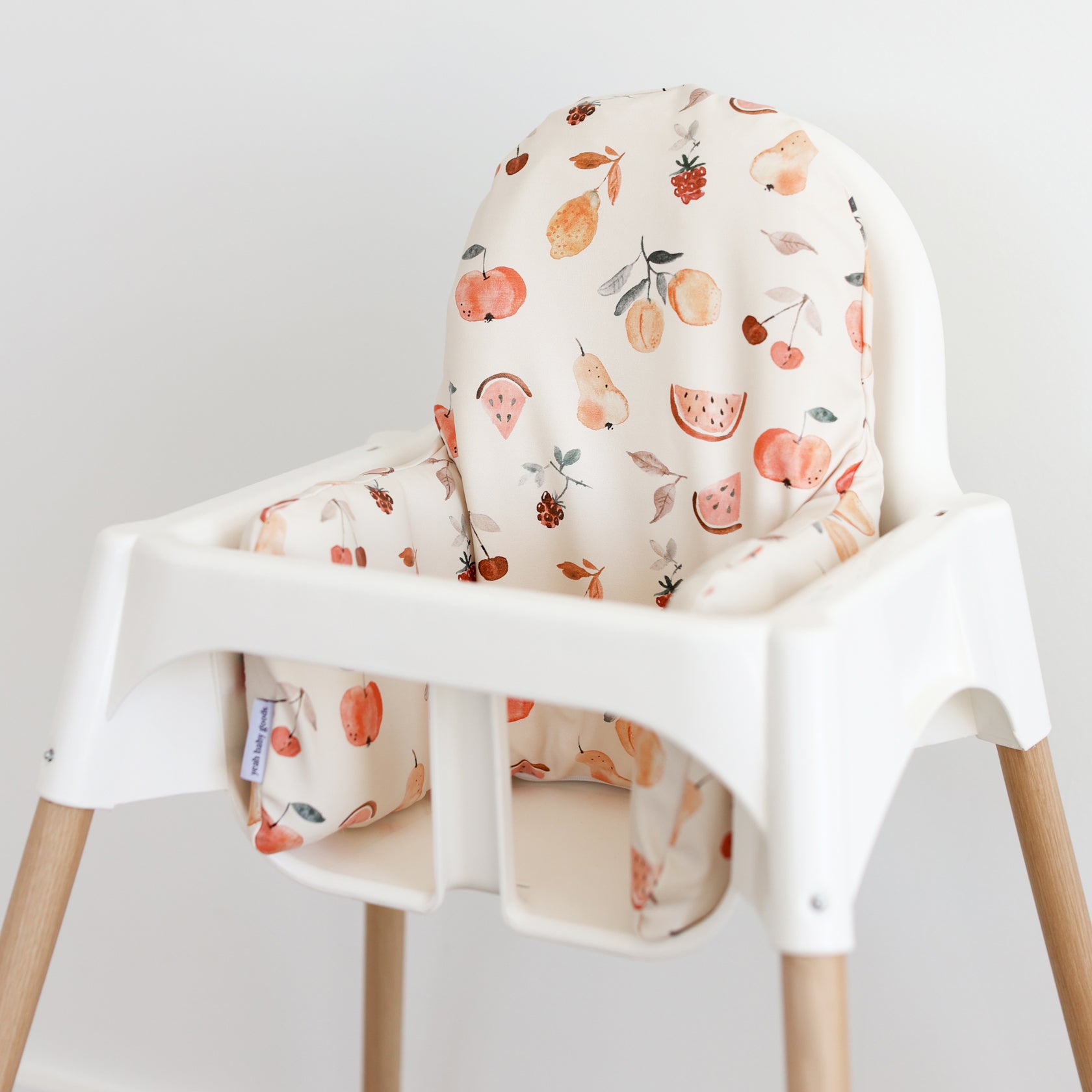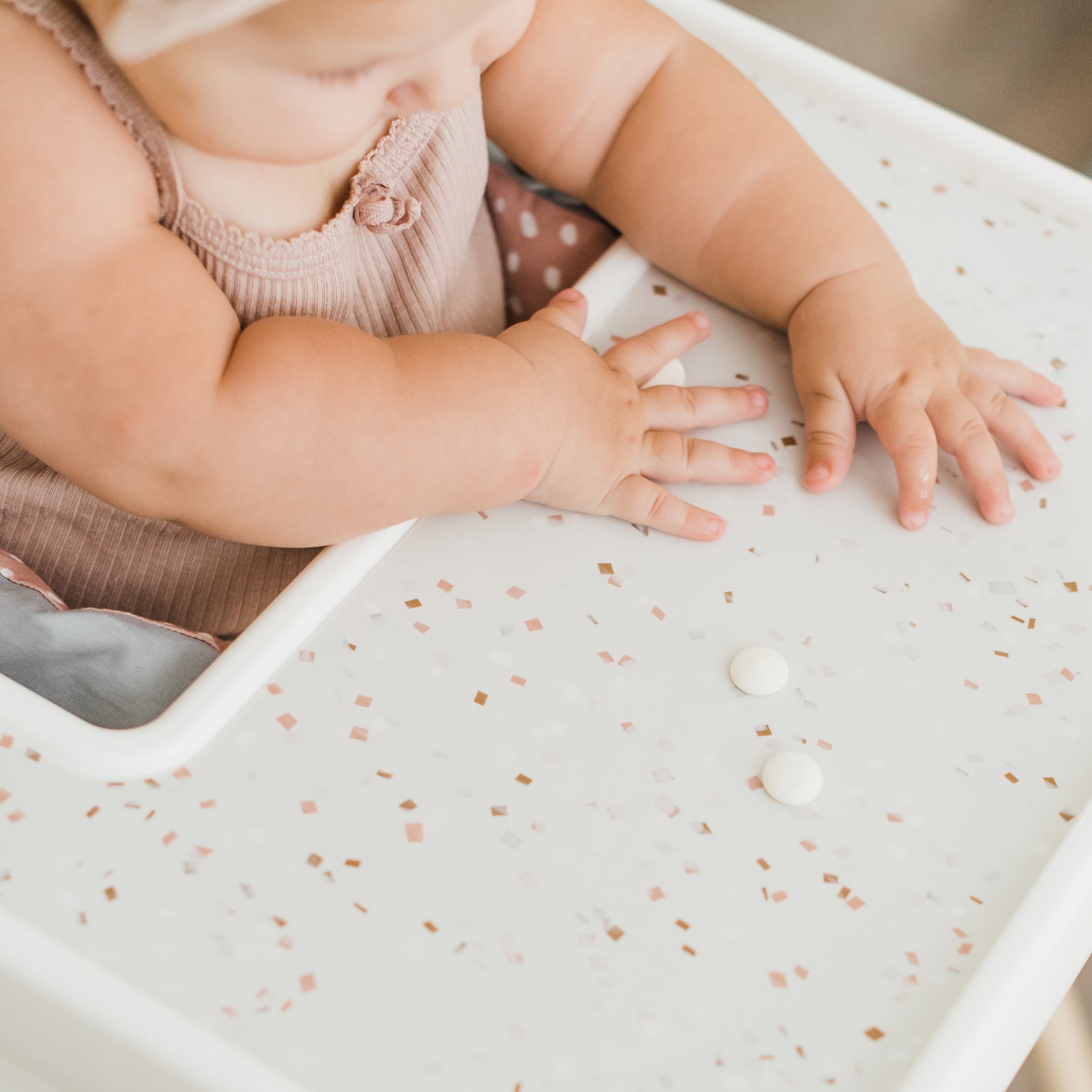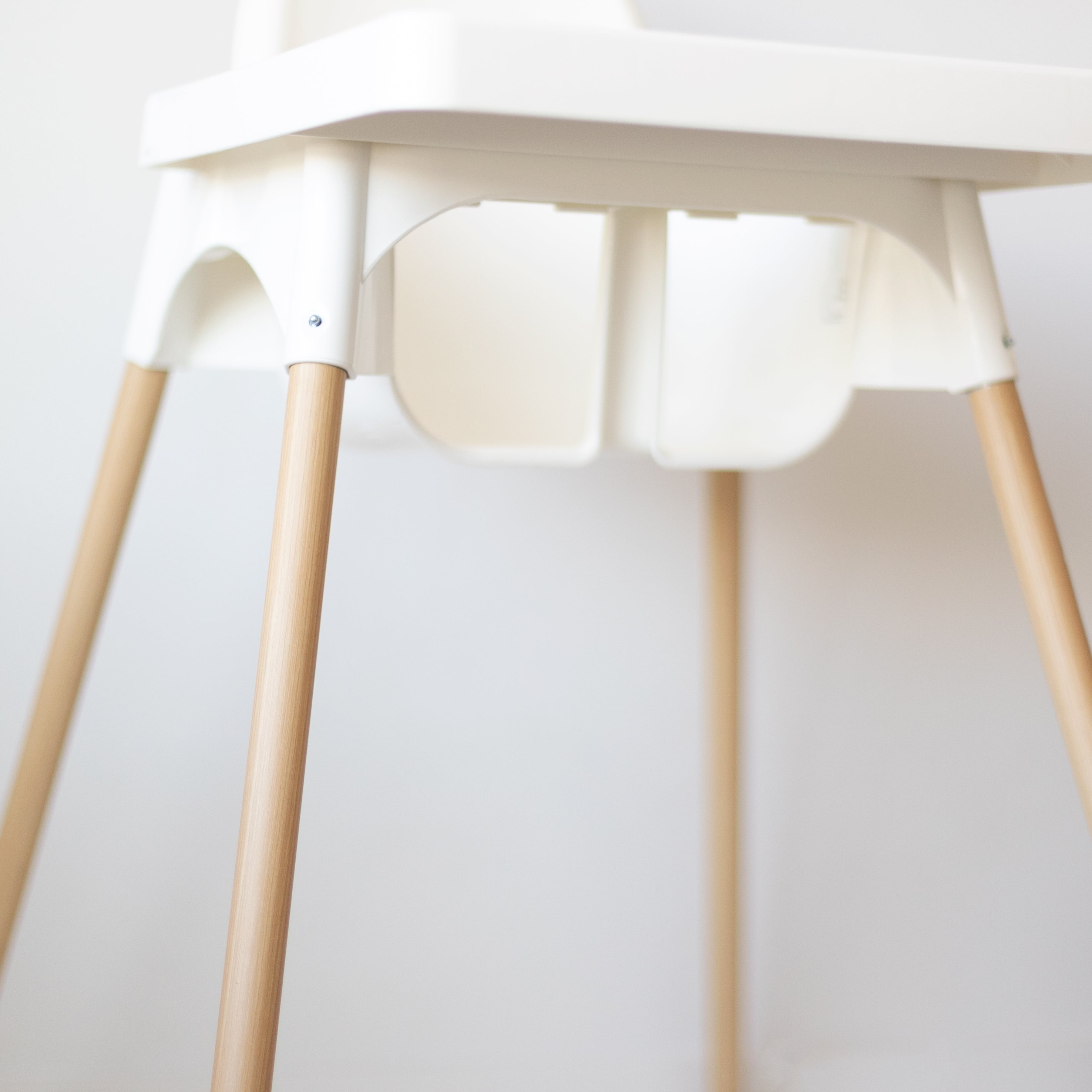A Parent's Guide to Mouthing

Mouthing vs Teething
"I think he must be teething. He's putting everything in his mouth lately!"
Around 4 months of age, babies begin to reach for objects and bring them to their mouth. This leaves many parents feeling like their baby must be getting teeth, but there is actually another reason you see this behavior in your infant - MOUTHING!
"Mouthing" is the term we use to describe when an infant brings objects to their mouth. This object could be ANYTHING - toys, utensils, teething rings, your hair, the dog's tail....really...anything and everything they can get their hands and mouth on.
Why is Mouthing Important?
This is a developmentally appropriate behavior for an infant, and quite frankly, a developmental milestone we should be paying attention to. Why? Because development stacks. What I mean by that is, your infant develops skills in a particular order so they can use that skill to help them learn the next skill. Bringing objects to the mouth and mouthing are skills that come before an infant learns to bring food to their mouth to chew and swallow. It's almost like they're practicing feeding themselves before the real food comes into play! If your infant doesn't consistently bring objects to their mouth before 6 months of age, I wouldn't expect them to bring food to their mouth when the time comes to introduce foods.
Very generally speaking, mouthing can help your infant explore different textures in their oral cavity, integrate the gag reflex back further in their mouth, and give the tongue and other structures the opportunity to move around in a variety of directions and shapes. In a way, it sort of gives the brain and mouth an opportunity to map out what is to come. Plus, many infants find mouthing objects soothing and regulating. This is one of the reasons I (along with many other feeding specialists) recommend replacing daytime pacifier use with mouth toys around 6 months.
Stages of Mouthing
Now, all developmental milestones come with a subset of what I like to call "mini milestones" within them. Mouthing is no different. On a screener at your pediatrician's office you might see "brings objects to mouth" on a developmental checklist, but there are many intricacies within this that you can be on the lookout for.
In the early stages of mouthing, you will notice your infant is keeping objects in the front of their mouth. As time passes, you will see them moving these objects further and further back in their mouth. This is when you will begin to see your baby's tongue move around more. Your baby may chew on rod-shaped or stick-shaped objects when they come into contact with their gums near the area where molars will eventually erupt. Much of this is reflexive at this point and will set the stage for controlled and coordinated oral movements later on.
How Can I Encourage Mouthing?
You might be wondering how you can support your baby in the development of this milestone. Generally speaking, as long as your baby does not have any developmental delays, all you really need to do is provide opportunity. Here are two ways you can do that:
1) Try to avoid blocking them from mouthing. I know your baby's environment is filled with germs and your initial instinct might be to stop them from putting everything in their mouth. But, within what you as a parent feel is reasonable and safe, allow him or her to mouth objects that are not posing a chocking risk or significant risk for illness.
2) Provide your baby with appropriate mouthing toys. The Yeah Baby Goods All You-Tensil is great for this and was a huge contributing factor when we decided to market it for babies 4+ months even though the recommended age for starting solids is around 6 months. Features that make this a great mouthing toy include it's soft silicone material, raised sensory bumps for texture variation, long stick shape, and wide handle for fine motor control.
What If My Baby Isn't Mouthing?
If your baby is receiving physical therapy, occupational therapy or speech therapy, I encourage you to talk to your baby's therapist on how you can incorporate mouthing practice into your home plan and routines. You can help your baby bring mouthing toys to their mouth, but it is important that you watch closely for distress signals and are responsive to them. We NEVER want to force anything into a baby's mouth without their consent. Start on the outside of the mouth such as their cheek or their lips, and wait for them to open their mouth to signal acceptance.
If your baby is not receiving early intervention due to other developmental concerns and your baby is not consistently mouthing objects by 6 months of age, I encourage you to talk to your pediatrician to see if there are other signs that your baby might benefit from an evaluation with a pediatric therapist.
RELATED POSTS









